Turkish Food: Basic Overview
Common Ingredients
Common Cooking Methods
Courses
Meals
Key Taste
Eating Etiquette
Meal Presentation
Culinary Festivals
Influence and Fusion
Popular Types of Turkish Food
-
Bread and Doughs
Bread is a staple food with great cultural and culinary significance in Turkey.
Turkish bread is often made from wheat flour and yeast or a natural starter.
Most Turkish bread varieties are baked in a hot oven.
In Turkey, bread can be served plain with savory dishes or used as the base for sandwiches and wraps.
-
Grilled and barbecued dishes
Turkish grilled meat is usually made with heavily seasoned lamb, beef, or chicken.
Locals typically serve this savory dish type with bread, salads, pickles, and dipping sauces.
The meat can be cubed or minced and is typically grilled on a skewer or a pit.
-
Snacks
Turkish snacks are diverse in terms of ingredients and cooking methods.
Many snacks are suitable for vegan and vegetarian diets, while others are savory meat-based items.
Baking, boiling, and grilling are popular ways of preparing snacks in Turkey.
Various snacks are also popular Turkish entrees, appetizers, and street food dishes.
-
Desserts
There are many types of desserts in Turkey, such as baked pastries, puddings, confectionery, ice cream, etc.
Turkish desserts are usually sweet and rich.
Many of these dishes feature dairy products (like cheese and yogurts), spices, and aromatic waters.
Decadent desserts are an important part of Turkish holiday meals.
Turkish dishes showcase a rich culinary tradition rooted in the heritage of Ottoman cuisine. These dishes are a fusion of various culinary influences, including Mediterranean, Balkan, Middle Eastern, Central Asian, and Eastern European flavors.
In particular, Turkish dishes are a bridge between Mediterranean dishes and Middle Eastern food offerings, showcasing the best of both worlds.
Thanks to Turkey’s vast geography, its food offerings vary across different regions. Olive oil is a staple, while other ingredients like vegetables, meat, and dairy products are abundant. Nuts and spices are important as well, especially in desserts.
I will talk more about these traits when discussing the main features of traditional Turkish food, along with interesting facts like its global popularity and healthy aspects.
Next, you will learn about the best 34 dishes in Turkey. For each well-known Turkish dish, you’ll have a closer look at its ingredients, flavor, textures, and other interesting insights like its origin or accompanying dishes.
After that, you can learn more about factors that impact Turkish cuisine culture and the ideal beverages to pair with these delicacies.
34 Most Popular Turkish Dishes with Filters
Take a look at my 34 Turkish food suggestions, and you will have a good understanding of what local cuisine is like. To navigate this content more easily, use my advanced filters regarding alphabetical sorting, main ingredients, taste, cooking methods, dish types, courses, and global popularity.
Next, check out additional filters based on specific culinary styles, such as traditional, national, and street food options.
Doner Kebab
- National
- Street Food
- Traditional
Doner kebab is one of the most popular Turkish specialties. It is made of seasoned meat cooked on a vertical rotisserie.
The meat for doner kebabs typically features lamb, beef, or chicken. As the meat slowly turns and cooks, the outer layers are shaved off and collected.
The concept of cooking meat in a vertical rotisserie has its roots in the Middle East and was later popularized during the 19th century in the Ottoman Empire.
You can find doner kebab in various forms: served on a plate with rice and vegetables, stuffed into pita bread, or wrapped in flatbreads like lavash or filo.
Doner kebab is often garnished with fresh or pickled vegetables (tomatoes, lettuce, and onions) and sauces (from garlic yogurt to spicy chili).
Iskender kebab is a famous variant. It features thinly sliced doner kebab topped with hot tomato sauce and served with pita bread.
Çöp Şiş
- Street Food
- Traditional
Çöp şiş (pronounced ‘chop shish’) refers to a type of lamb shish kebab in Turkey. Hailing from the Anatolian region, it is generally cooked on wooden skewers.
To make çöp şiş, the lamb is combined with bits of fat, spices, garlic, and tomatoes. This mixture is left to soak up flavors from a marinade of black pepper, oregano, and olive oil. The marinated meat is cooked over a grill called an “ocak” until tender.
Çöp şiş is traditionally accompanied by a vibrant medley of grilled peppers and onions. Bread is also a common side, allowing you to wrap up the meat and veggies for a handheld treat.
Köfte
- Street Food
- Traditional
Köfte is a staple dish in Turkish cuisine, featuring seasoned meatballs. The meat, usually lamb, beef, or chicken, is finely ground and combined with various spices.
Other ingredients, like rice, bulgur, or even vegetables, are also used in köfte. The shapes can vary from traditional balls to patties and even cylinders.
Depending on the region in Turkey, you will find köfte grilled, fried, or even stewed in a rich sauce. The size can range from small, bite-sized pieces to much larger forms.
Some common variations of köfte in Turkey are i̇negöl köfte (grilled meatballs from İnegöl, Bursa, Turkey) and çiğ köfte (raw meatballs, associated with Şanlıurfa province).
Baklava
- National
- Traditional
Baklava is a well-loved Turkish dessert made with a paper-thin sheet of filo dough filled and topped with crushed pistachios, hazelnuts, and walnuts. People coat it with a syrup made from honey or sugar, water, and lemon juice.
The filo layers of baklava offer a crispy contrast to the rich, nut-filled core. In Turkey, the types of nuts used and the shape of the baklava can vary, allowing for regional interpretations of this sweet treat.
The history of this wonderful dessert is still under debate. Some said that it originated from the Central Asia region of Turkey when the Ottoman Empire ruled the country.
Today, baklava symbolizes hospitality and culinary prowess, whether it’s for a family gathering, a festival, or a regular day.
Kuru Fasulye
- National
- Traditional
Kuru fasulye, literally “dry beans,” is a bean stew in Turkey. A testament to the country’s Ottoman heritage, it dates back to the 18th century and is now an immensely popular dish.
Locals prepare kuru fasulye by simmering white beans and onions with olive oil in a rich tomato paste or sauce, creating a savory stew. Cured meat and extra vegetables are often added.
This comfort food is typically served hot with rice or bulgur. There is a similar dish called fasolada in Greece.
Meze
- Traditional
Meze refers to an assortment of small dishes that serve as an appetizer or even a full meal in Turkey.
Meze selections are very diverse, ranging from simple olives, cheese, and bread to more complex dishes like stuffed grape leaves, hummus (a popular dip), and various seafood options (such as fried calamari or marinated anchovies).
Meze is more than just food; it’s a social experience. Meze is often enjoyed with a glass of raki, a traditional Turkish anise-flavored spirit.
Dolma
- Traditional
Dolma is a versatile Turkish dish showcasing the art of stuffing. Its name means “something stuffed”. Wrapped dolma is also known as sarma and is prepared by rolling leaves of grape, cabbage, or others around the filling and cooking them in broth.
A typical dolma filling includes various ingredients, like vegetables (bell peppers, eggplants, or zucchinis), rice, herbs, and, sometimes, meat or seafood. There are both vegetarian and non-vegetarian versions.
Dolmas reflect the rich Ottoman cuisine and are well-known in many Mediterranean, Balkan, and Middle Eastern countries. Whether served hot or cold, these stuffed delights are an ideal main dish or as a part of a meze platter.
To enhance the taste, dolmas customarily go with a refreshing dollop of yogurt, a sprinkle of oregano, and a drizzle of red pepper powder-infused oil.
Manti
- Traditional
Manti is a well-loved kind of dumpling in Turkey. It consists of small pockets of dough filled with a mixture of spiced meat, usually lamb or beef.
These dough pockets are then either boiled or steamed and are served with a garlic-infused yogurt sauce, red pepper powder, melted butter, ground sumac, and dried mint.
Manti registers influences from Central Asian, Mediterranean, and Middle Eastern cuisines. Some well-known variations are kayseri mantısı (from the Central Anatolian city of Kayseri) and boş manti (non-filling variant).
Menemen
- Traditional
Menemen is a hearty Turkish breakfast dish with eggs, tomatoes, and green peppers, all cooked together in olive oil. It’s spiced with black and red pepper and sometimes includes additional ingredients like onions, garlic, or sucuk (a type of Turkish sausage).
Besides being a breakfast, menemen is also a quick main meal. Locals often serve it right in the pan to preserve its warmth. This breakfast dish usually pairs with fresh and crusty bread.
Lahmacun
- Street Food
- Traditional
Lahmacun, literally “meat with dough,” is a thin flatbread topped with a mixture of minced meat (usually beef or lamb), vegetables, and herbs like onions, garlic, tomatoes, and parsley.
This savory flatbread dish is seasoned with spices like chili pepper and paprika. After baking, the crispy and thin flatbread is rolled up with additional fresh vegetables to create a satisfying meal.
Börek
- Street Food
Börek is a well-known Turkish pastry made from layers of thin, flaky dough (often filo) and can be filled with meat, cheese, spinach, or potatoes.
The allure of börek lies in its crisp, rich texture, achieved by layering ultra-thin dough and a savory filling. Its shapes and sizes vary, such as rolls, triangles, or squares. There are countless regional and personal börek variations across Turkey.
Börek is normally baked, but some versions are fried. People enjoy both versions as a main course, a snack, or even as a part of a larger spread of dishes.
İçli Pide
- Traditional
İçli pide is a delectable Turkish dish best described as a boat-shaped pastry filled with a flavorful mixture. The word “içli” in Turkish means “filled.”
The dough of i̇çli pide is soft and slightly chewy, while the filling typically consists of ground beef or lamb, finely chopped onions, tomatoes, and aromatic spices like paprika and cumin. Some versions include pine nuts or parsley.
An excellent i̇çli pide must have a golden brown and crispy crust. For serving, a few lemon wedges are ideal. Locals usually cut this filled pastry into smaller portions to enjoy as a snack or appetizer.
Mercimek Köftesi
- Traditional
Mercimek köftesi is lentil-based small patties of Turkish origin. Its star ingredient is red lentils, which are cooked until soft and then mixed with finely chopped onions, fresh herbs (like parsley and mint), and aromatic spices.
Traditionally served cold, mercimek köftesi is a popular and plant-based meze item and snack. Pair these lentil patties with crisp lettuce and a squeeze of fresh lemon juice.
Ezogelin Soup
- Traditional
Ezogelin soup is a classic Turkish recipe made with red lentils, bulgur wheat, and rice. Its hearty base is seasoned with onions, garlic, red pepper paste, and a blend of spices like red pepper flakes and mint.
Hot Ezogelin soup is known for its rich, earthy taste. Remember to garnish the soup with a drizzle of olive oil, a squeeze of lemon juice, and fresh mint leaves before serving.
Ezogelin soup gets its name from a legendary Turkish bride named Ezo, who was famous for her beauty and culinary skills. This soup now symbolizes the strength and resilience needed to overcome life’s challenges.
Mücver
- Traditional
Mücver is a cherished Turkish appetizer or snack made from grated vegetables, most commonly zucchini. With its roots in Ottoman cuisine, this dish was once known as “mücmer” before being renamed “mücver” by the locals.
To make mücver, people prepare a mixture of grated zucchini, herbs, onions, and spices, shape the mixture into small patties, then fry them until crispy and golden brown.
Mücver is best served with yogurt or a squeeze of lemon juice. Some also accompany it with a fresh leafy salad, crusty bread, or garlic-infused yogurt.
Pilaf
- Traditional
Pilaf is a versatile rice dish cooked with onions, spices, and sometimes saffron in Turkish cuisine. Additional ingredients, like vegetables, dried fruits, or nuts, are often incorporated, depending on the type of pilav being prepared.
Making pilaf involves simmering the ingredients over low heat, allowing the rice to absorb the flavors and become tender. This flavorful and fragrant rice dish is a fantastic side dish or a main course when accompanied by toppings, grilled meat, salads, or yogurt.
Some popular varieties of Turkish pilaf are pirinc (rice) pilaf, arpa şehriye (orzo) pilaf, and bulgur pilaf.
Hamsili Pilav
- Traditional
Hamsili pilav is an exquisite baked rice dish that combines rice and anchovies from Turkey, particularly the Black Sea region.
Hamsili pilav is a layered delicacy, with a base of seasoned rice followed by a layer of fresh anchovies and another layer of rice. Other ingredients like onions, pine nuts, and currants add the crunch and sweetness.
Şakşuka
- Traditional
Şakşuka is a typical side dish or meze item in Turkey. It includes sautéed vegetables, such as eggplants, zucchini, tomatoes, and bell peppers, all simmered in olive oil. Aromatic garlic and herbs are incorporated to enhance the flavors.
Şakşuka is a great option for a vegan Turkish meal. This plant-based dish accompanies raki excellently and is present in many local restaurants.
Şakşuka is also popular in neighboring countries, such as Yemen, Libya, and Tunisia.
Bazlama
- Traditional
Bazlama is a circular flatbread hailing from Turkish cuisine. It’s a leavened bread made of yeast, flour, salt, and water.
With an average thickness of about 0.8 inches and diameters spanning from 4 to 10 inches, bazlama has been cherished by locals for centuries. In some villages of Turkey, you will come across bazlama still baked in traditional rock ovens.
This leavened flatbread is best eaten fresh with a crisp salad and tangy pickled vegetables. Its shelf life can be relatively short, ranging from a few hours to a few days.
Gözleme
- Street Food
Gözleme is a scrumptious Turkish stuffed flatbread consisting of dough and fillings. The dough is often made from basic ingredients like flour, salt, and water, although some variations use yeast-based dough.
The ingredients for filling gözleme vary, from minced meat (beef or lamb) to cheese and various vegetables (such as spinach and peppers). Once the dough is filled, it’s sealed and cooked on a griddle.
The name “gözleme” is derived from the Turkish word “közleme,” meaning “to grill or cook on the embers.” This cooking method results in a stuffed flatbread with a crispy exterior and a soft, flavorful interior.
Over the years, gözleme has evolved from a homemade snack or breakfast item to a fast-food staple.
Hummus
- Traditional
Hummus is a favorite dip in Turkey with roots in the Levant. It’s a creamy, savory spread made primarily from mashed chickpeas, tahini (a sesame seed paste), lemon juice, and garlic.
Turkish people widely serve hummus as a part of a meze platter. People eat it with various types of dishes, like pita bread, vegetables, or even meat.
Lamb Tandoori
- Traditional
Lamb tandoori, known as kuzu tandir or tandir kebabi, is a Turkish lamb dish with a special cooking process. The name itself is a testament to its origins: “kuzu” translates to “lamb,” while “tandir” refers to an ancient cooking method devised by the Seljuk Turks.
Originating from the Akşehir region of Turkey, lamb tandoori involves marinating lamb pieces, sometimes even a whole lamb, in a blend of spices and other ingredients like onions, tomatoes, and peppers.
The meat is then slow-cooked in a tandir oven. To fully enjoy kuzu tandir, be sure to pair it with bread and raw onions!
Hünkâr Beğendi
- Traditional
Hünkârbeğendi (or beğendi) is a luxurious dish in Turkey that combines eggplants and lamb or beef.
Beğendi has its roots in the Ottoman Empire. Its name literally translates to “the sultan liked it,” suggesting that this dish was once favored by Ottoman sultans.
To make hünkârbeğendi, locals grill eggplants until their skin is charred, imparting a smoky flavor. After removing the skin, they mash and mix the eggplants with a creamy béchamel sauce.
Beğendi is typically topped with sautéed or grilled meat cubes and served on special occasions or in high-end restaurants.
Tantuni
- Street Food
Tantuni is a Turkish fast food and street food that hails from the city of Mersin, a city in the Southern region. It’s a spicy, stir-fried meat delight, usually made with thinly sliced beef or sometimes lamb.
Tantuni is assembled in lavash bread and usually goes with fresh ingredients like chopped onions, tomatoes, green peppers, and parsley. This fast food is also seasoned with fiery chili powder or peppers to add a spiciness.
Tantuni is cooked on a sac, a metal-made cooking utensil with some cotton oil. It is generally a healthier alternative to other fast-food dishes. People often serve tantuni with pickled peppers and ayran, a cool and creamy yogurt-based drink.
Sütlaç
- Traditional
Sütlaç is a Turkish-style rice pudding comprising milk, rice, sugar, and sometimes vanilla. Since it has a smooth and creamy consistency, this rice pudding was initially created as a comforting remedy for those with stomach ailments.
Whether served warm or chilled, sütlaç is usually garnished with a sprinkle of cinnamon on top and browned in a salamander broiler.
Dondurma
- Street Food
Dondurma is a unique form of Turkish ice cream famous for its chewy texture and resistance to melting. It combines cream, sugar, and two special ingredients: salep and mastic (a plant resin), which give them a distinctive texture.
Originating from the Kahramanmaraş region, this ice cream is sometimes so tough and sticky that people serve it with a knife and fork. Dondurma doesn’t drip like ordinary ice cream and can even be enjoyed while held upside down.
You can find dondurma from many street vendors. They sell this ice cream while putting out a playful show in front of customers, twirling the ice cream on a stick before finally handing it over.
Şekerpare
- Traditional
Şekerpare is a beloved dessert that you can see in many Turkish households, bakeries, and restaurants. It is often enjoyed during festive occasions or as a sweet treat.
Şekerpare are small, soft pastry balls made with semolina, baked, and then soaked in a lemon-flavored sugar syrup. Its name means “a piece of sugar,” indicating its exceptional sweetness. Traditionally, people enjoy şekerpare with Turkish coffee and tea.
Lokum
- Traditional
Lokum, or Turkish delight, is a famous sweet treat in the Turkish culinary tradition. It refers to bite-sized cubes made of starch and sugar.
Lokum has a soft, chewy, and slightly sticky texture. It’s available in various flavors, from rosewater and lemon to pistachios, hazelnuts, or dates. These sweet cubes are usually dusted with powdered sugar to prevent them from sticking together.
Dating back to the 18th century, lokum is associated with hospitality and special occasions in Turkey. You can buy this treat from street vendors or specialty stores across the country. Turkish delight makes the perfect addition to a cup of coffee or tea.
Kadayıf
- Traditional
Kadayıf is a versatile dessert in Turkey with roots in the Ottoman Empire. It’s made from liquid wheat dough that’s poured onto a hot, rotating plate.
Kadayıf can take on various forms, including being layered with sweeteners or even used as a base for puddings.
Renowned types of kadayıf are tel kadayıf (including nuts and kadayıf noodles), taş kadayıf (a folded sweet dumpling filled with walnuts), and burma kadayıf (a circular sweet pastry with phyllo layers).
Ekmek Kadayıfı
- Traditional
Ekmek kadayıfı is an exquisite Turkish dessert with bread served with kaymak, a creamy dairy food similar to clotted cream.
Originating from the times of the Ottoman Empire, ekmek kadayıfı is a creative way to use stale bread. The bread is hollowed out to create a bowl-like shape, which is then soaked in a dark caramel syrup known as “şerbet.”
In Turkey, ekmek kadayıfı is particularly popular in the region of Afyonkarahisar. It’s a sought-after treat at iftar meals during Ramadan.
Kaymak
- Traditional
Kaymak is a Turkish dairy food made by boiling the milk of goats, cows, sheep, or water buffaloes and allowing it to cool. It is very similar to clotted cream.
With a high-fat content, usually around 60%, kaymak has a rich, velvety texture and a luxurious taste. This dairy product is an important part of traditional Turkish breakfasts and desserts.
You can also enjoy kaymak with fruit preserves or honey or use it as an irresistible filling in pancakes.
Künefe
- Traditional
Künefe is a sweet and crispy Turkish pastry made from layers of thin, shredded dough (often referred to as kadayıf) and a gooey filling of sweet, melted cheese.
Künefe is flavored with fragrant syrup and lemon juice to balance the sweetness. This Turkish pastry is served warm to ensure the contrast between the crispy layers and the gooey center. For garnish, crushed pistachio, walnut, or a dollop of clotted cream is ideal.
Kazandibi
- Traditional
Kazandibi (or kazan dibi) is a tasty dessert in Turkish culinary tradition. It is a creamy and chewy treat with the mild bitterness of caramelized sugar.
Kazandibi is made by scorching the bottom layer to acquire a toasted, caramel-like flavor. This burnt layer gives kazandibi its name, meaning “bottom of the cauldron.”
Tavukgöğsü
- Traditional
Tavukgöğsü is a Turkish dessert that combines the unlikely ingredients of chicken breast and milk to create a creamy, sweet, and savory pudding.
To make tavukgöğsü, locals boil chicken breast until tender, shred it into fine fibers, and mix it with milk, sugar, and sometimes rice flour. The mixture is cooked until it thickens into a pudding-like consistency.
Historically, tavukgöğsü was widespread throughout the Ottoman Empire, a country that significantly shaped Turkish cuisine. Today, this dish has a royal heritage and is now widely enjoyed across Turkey.
What Are the Factors That Influence Turkish Food Culture?
Turkish food culture is influenced by five main factors that have shaped it over the years, namely historical and culinary influences, cultural exchange, geographical diversity, religious practices, and dining customs.
The cuisine of the Ottoman Empire has a significant impact on Turkish culinary traditions. The Ottomans brought with them a rich blend of Balkan, Central Asian, Middle Eastern, Mediterranean, and Eastern European cooking.
Hailing from the crossroads of Europe and Asia, Turkish dishes have been influenced by various cultures, including Greek, Persian, Arab, and Balkan culinary cultures.
Turkey spans varied climate and geographical features, including three different seas, various coastal regions, and many mountainous areas. This unique condition contributes to a diverse range of ingredients and dishes.
Islam is the predominant religion in Turkey and plays a decisive role in local food culture, particularly in dietary laws and the celebration of religious festivals.
In Turkey, breakfast is a significant family affair featuring a variety of foods. Other meals often center around family and community gatherings, with an emphasis on sharing and hospitality.
Another important feature of Turkish dishes is their suitability in pairing with local beverages, which I will address shortly.
How To Pair Beverages with Dishes in Turkey?
In Turkey, choosing suitable beverages accompanied by food is essential. Here are three famous drinks that you can enjoy with different food categories.
Ayran
As a yogurt-based drink, ayran pairs well with meaty wraps, like doner kebabs and tantuni.
Tea or Coffee
Both tea and coffee are staple beverages in Turkish cuisine and go well with any type of dish, though many locals prefer to enjoy them alongside pastries or sweet desserts.
A typical Turkish breakfast often has tea or coffee on the side.
Raki
This Turkish anise-flavored spirit is a part of meze and usually accompanies seafood, meat dishes, and many different kinds of appetizers.
While these drinks are enormously popular in the country, they are but a few selections from the extensive list of Turkish beverage options. There are many other choices that are worth discovering.
Share this list of Turkish dishes with your friends. In the comments section, I would be delighted to read about your encounters with these appetizing specialties. Thank you for accompanying me on this flavorful odyssey!


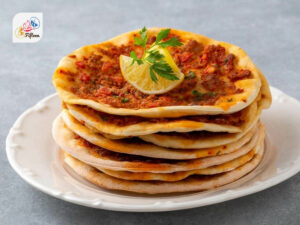
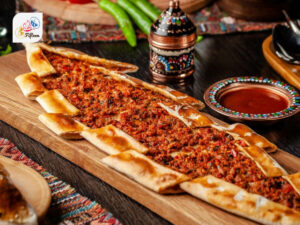
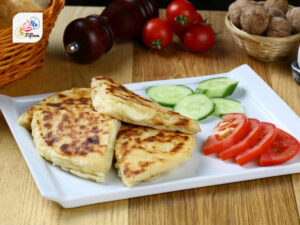
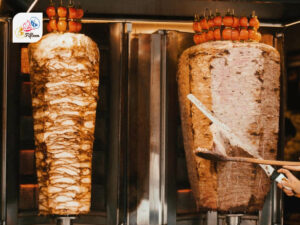
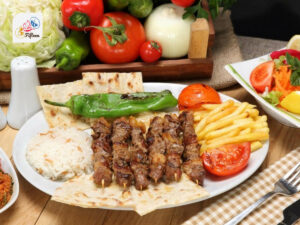
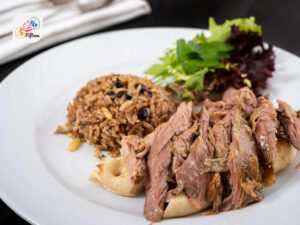
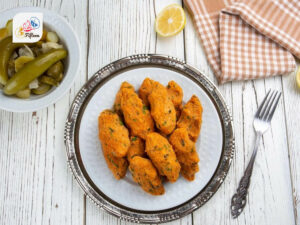
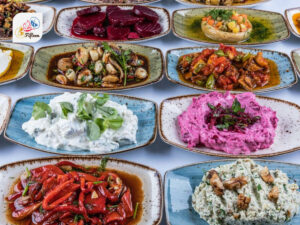
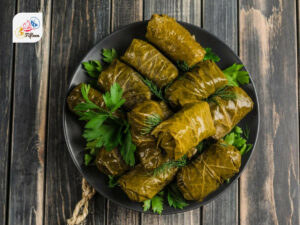

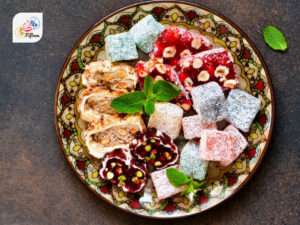
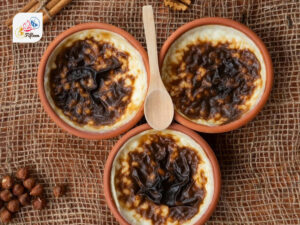
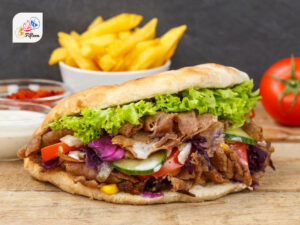
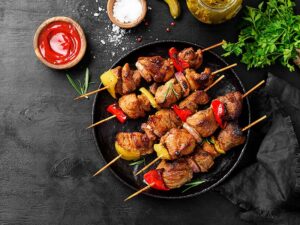
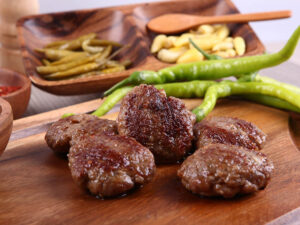

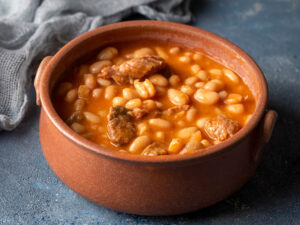
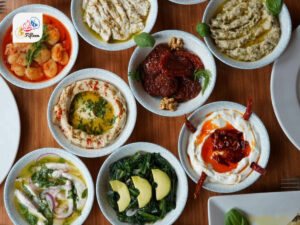
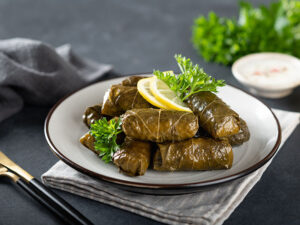
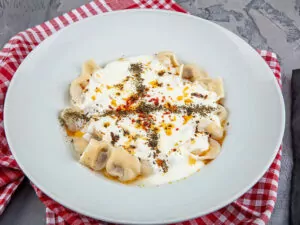
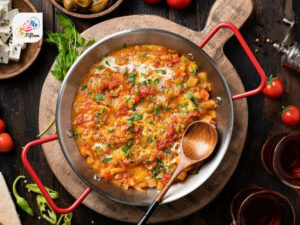
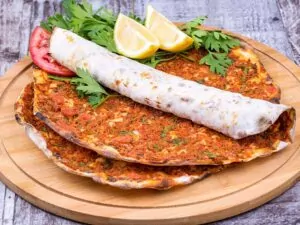
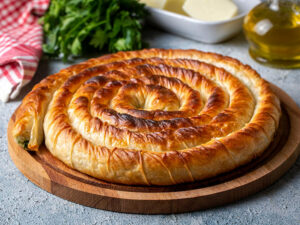
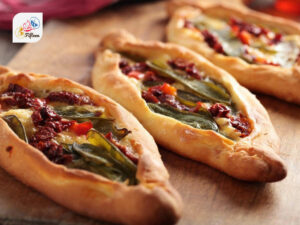
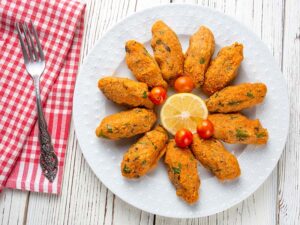
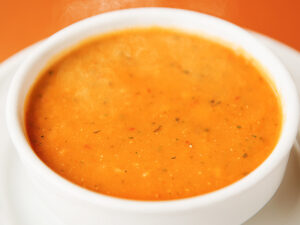
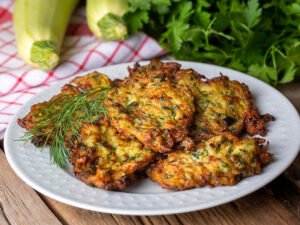
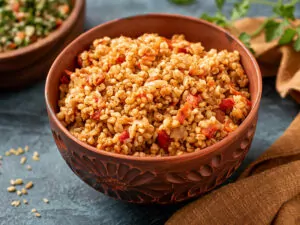
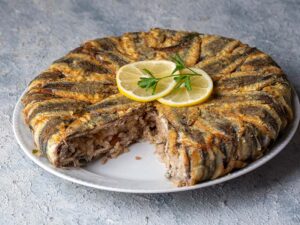
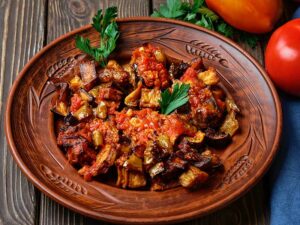
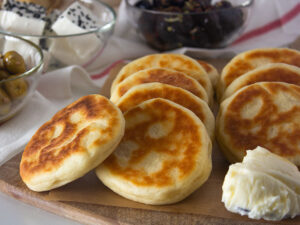
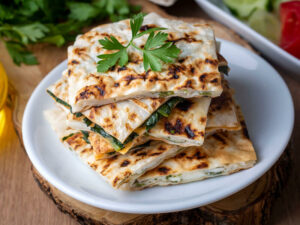
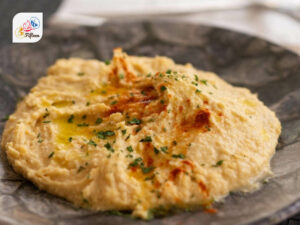
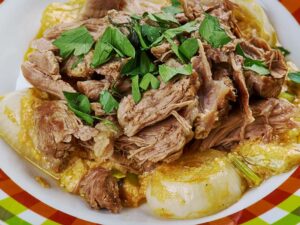
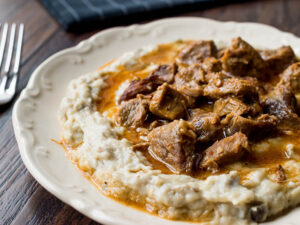
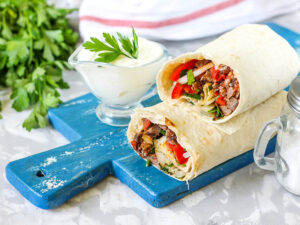
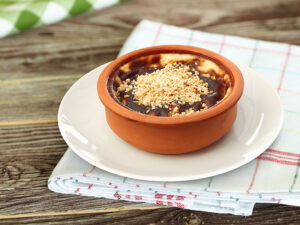
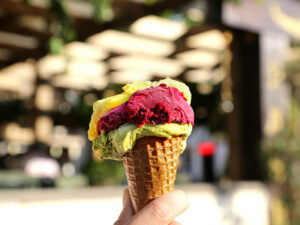


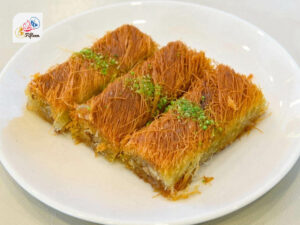
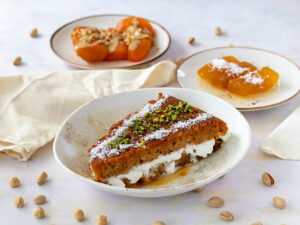
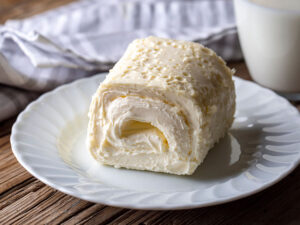
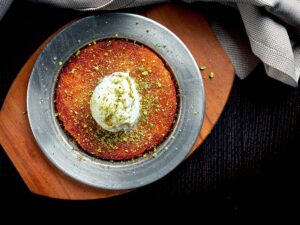
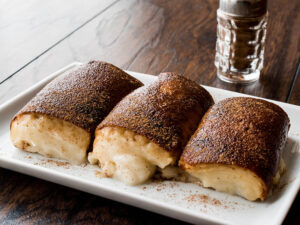
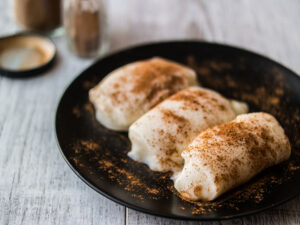
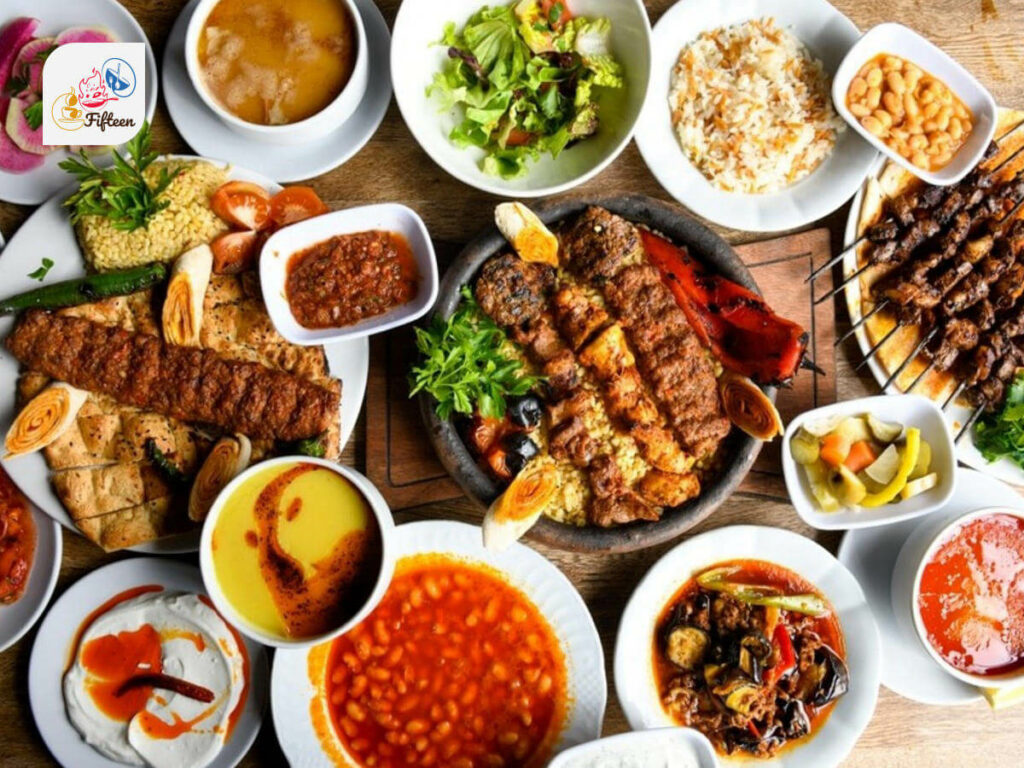

Jamie Scott
Editor in Chief, Senior Content Writer
Expertise
Home Cooking, Meal Planning, Recipe Development, Baking and Pastry, Food Editor, Cooking-video Maker, Western Food Evaluation Expert
Education
Le Cordon Bleu College of Culinary Arts
Local Community College, New York, NY
Jamie Scott is a skilled culinary expert and content creator specializing in Western cuisine. With over 15 years in the culinary field and formal training from Le Cordon Bleu, Paris, Jamie deeply understands how to blend nutrition with delicious flavors. His passion for cooking matches his commitment to making healthy eating accessible and enjoyable.
On Fifteen.net, Jamie brings a fresh perspective to classic dishes and beverages, offering readers insightful recipes, cooking tips, and a fresh view on meal planning that emphasizes taste, health, and simplicity.